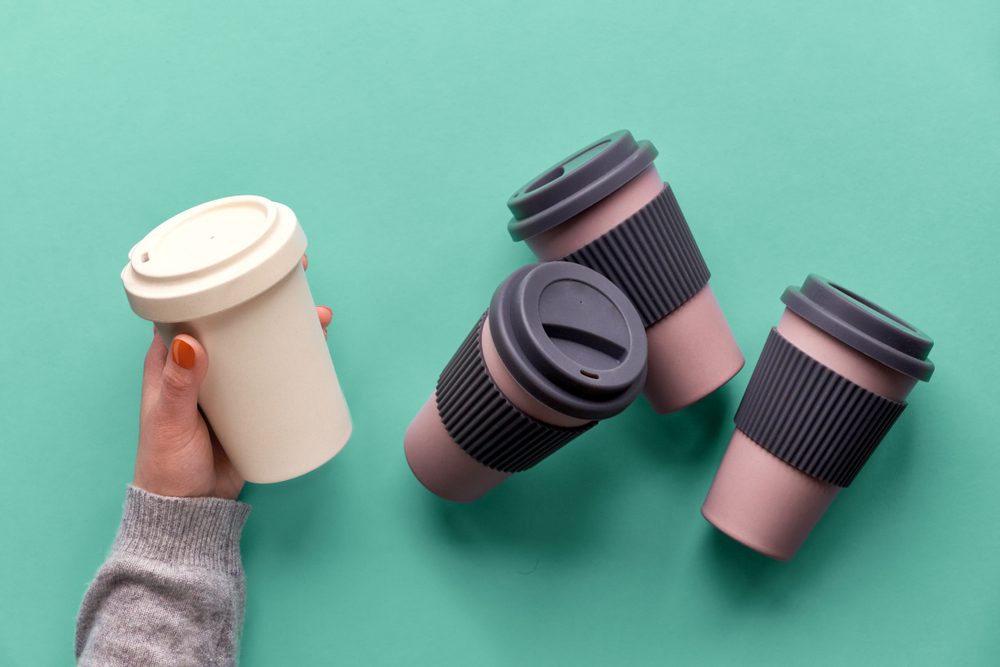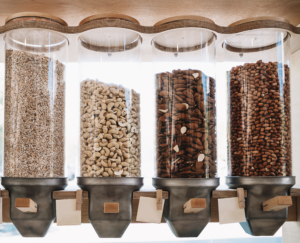
We all have a part to play in reducing plastic pollution. Recycling is a key part of this; ensuring that plastic is kept in the economy and out of the environment. But it’s important to remember that, where possible, we should reduce or re-use before recycling.
As the mantra goes – reduce, re-use, recycle!
Moving from single-use plastic by reducing and re-using means that less plastic is needed on the market; this helps to eliminate plastic waste and can significantly reduce greenhouse gases emissions[1].
In fact, The Ellen Macarthur Foundation report that if a plastic bottle is re-used 20 times, it means 95% less packaging waste[2].
What are brands, businesses and retailers doing to help?
Lots of work is happening through initiatives like The UK Plastics Pact, which brings together many key organisations – including brands, businesses, retailers, governments, waste management companies, NGOs (and more) – to tackle the scourge of plastic waste.
The UK Plastics Pact has a target to eliminate problematic and unnecessary single-use plastics through redesign, innovation or alternative (reuse) delivery models by 2025. Within that same timeframe, The UK Plastics Pact aims to make all plastic packaging re-usable, recyclable or compostable.
 Examples of proactive action from brands and businesses include a Waitrose trial of refill options in store; including cereals, loose fruit and vegetables and detergents[3].
Examples of proactive action from brands and businesses include a Waitrose trial of refill options in store; including cereals, loose fruit and vegetables and detergents[3].
Tesco is trialling an initiative with Loop to deliver products to your door in re-useable packaging, which they then pick up and refill[4].
And it doesn’t stop at groceries – brands are also looking at how we can introduce more re-use and refill options in the bathroom and bedroom too. For example, P&G now offer a refill pod for their Olay moisturiser[5], meaning you don’t have to bin your face cream pot.
There are lots of learnings coming out of trials such as these which will help to inform industry, and in turn boost re-use and refill options for the future. The UK Plastic Pact’s aim is to make re-use and refill options mainstream by 2025.
What can we do at home to reduce and reuse plastic packaging?
The good news is that we are open to the idea of reducing and re-using plastics. A poll conducted by Populus revealed that over 90% of UK consumers support the idea of having products free of plastic packaging[6], while a 2020 YouGov poll found that around 60% of people surveyed said they’d be willing to buy dry goods using a reuse scheme. Over half said they’d be happy to try re-use for household cleaning products, and two thirds would prefer it if online shopping platforms made it easier to request less packaging[7].
Top tips for reducing and reusing plastics
- Remember to take your own bags to the supermarket – they can be re-used multiple times and plastic carrier bags can be recycled at many supermarket collection points if you’re no longer able to use them.
- Many brands and retailers offer refill options for popular items such as cleaning products and laundry detergents – and remember to recycle the refills if you can.
- Stores that sell items without plastic packaging are becoming increasingly popular – check out if there are any in your area.
- Buy and continue to use your re-useable lunch box, hot drinks cup and drinks bottle – many retailers now offer money off incentives and refill options.
- Reduce use of cling film by using a plate on top of a bowl in the microwave and fridge.
Re-use and refill during the pandemic
The COVID pandemic has raised some issues around safety of loose groceries; with a recent survey showing that 29% of respondents felt less comfortable buying loose groceries[8] – despite research showing that the virus can last for up to three days on plastic[9] – leading to many retailers adding packaging to loose groceries amid concerns.
City to Sea are campaigning for continued use of re-usables during the Covid-19 pandemic, as research shows they remain safe to use, providing basic hygiene is in place[10].
Sources
[1] European Commission. Paspaldzhiev, I. Stenning, J. Seizov, P. (2018). Life Cycle Inventories Of Single Use Plastic Products And Their Alternatives. Available at: https://ec.europa.eu/environment/enveco/pdf/DG_ENV_Single_Use_Plastics_ LCA_160718.pdf
[2] https://www.ellenmacarthurfoundation.org/case-studies/how-re-thinking-the-business-model-for-cleaning-products-can-influence-design
[3] https://www.waitrose.com/ecom/shop/featured/groceries/unpacked
[4] https://www.tesco.com/groceries/en-GB/zone/loop
[5] https://us.pg.com/blogs/OlayRefill/
[6] Packaging Gateway. (2020). Loop Launches First Online Service For Groceries In Reusable Packaging. Available at: https://www.packaging-gateway.com/comment/loop-launches-first-online-service-for-groceries-in-reusablepackaging/
[7] Greenpeace. (2020). Plastic Packaging During The Pandemic YouGov Poll. Available at: https://app.crunch. io/dataset/3c4139a18df24ed99f95a5d671c6f6f6/ browse?variableId=5J95EX4e61qE3Xp377cdlH000006
[8] Harris Interactive survey of 1000 shoppers
[9] New England Journal of Medicine
[10] https://www.citytosea.org.uk/reusables-during-covid/
